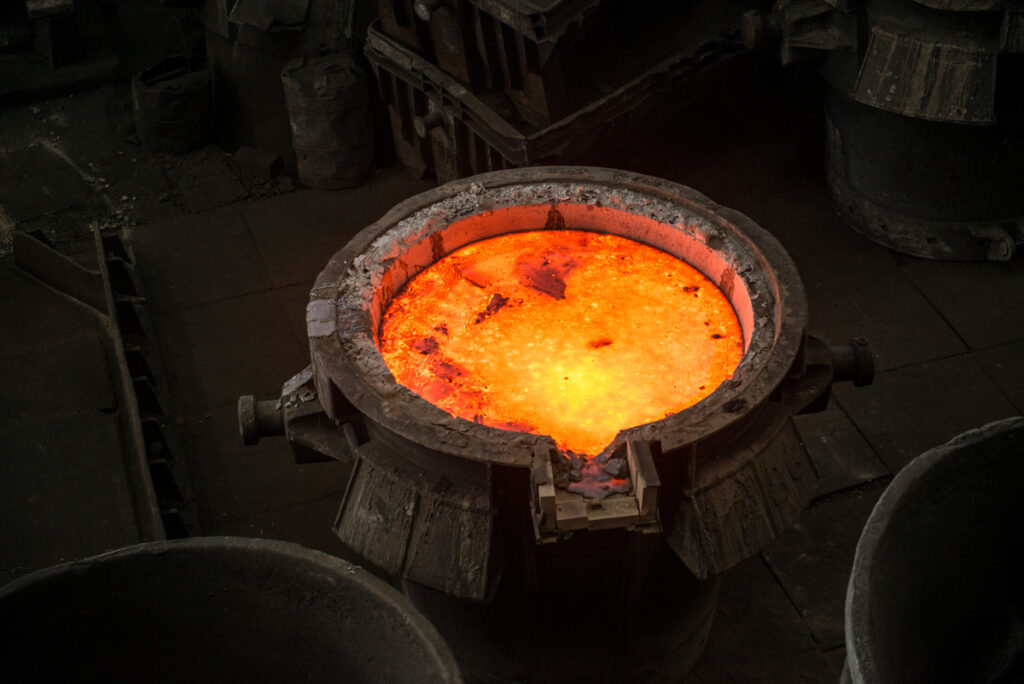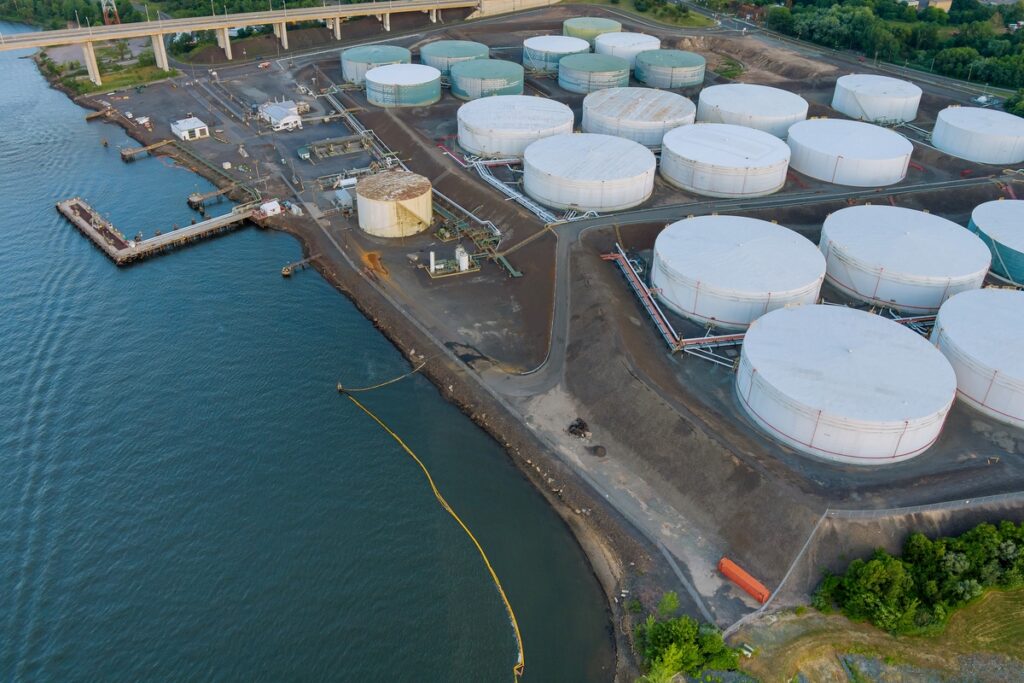Energy Storage in Phase Change Materials (PCM)
Thermal energy storage technology in Phase Change Materials (PCM) represents an advanced and efficient solution for managing heat in multiple applications. By exploiting the latent heat generated during phase change processes, PCMs allow thermal energy to be stored and released in a controlled manner, with high energy density and stability.
Introduction to Phase Change Materials (PCM)
Phase Change Materials (PCMs) are an advanced thermal storage technology that takes advantage of state changes (primarily from solid to liquid or from liquid to gas) to accumulate and release energy in the form of latent heat. This type of thermal storage is particularly interesting because it allows a significant amount of energy to be stored in a relatively small volume, thanks to the high energy density associated with phase change processes.
Research and development of PCMs as a technology for energy storage have increased their Technology Readiness Levels (TRLs) from prototyping (TRLs 1 – 3) to demonstration plants (TRLs 4 – 5) and even demonstration in a relevant environment (TRLs 6 – 7), as the need for more specific solutions to manage thermal energy in various applications emerged. From building climate control systems to applications in industry and the energy sector, PCMs have proven to be a versatile and promising application.
Their relevance is growing exponentially in the context of the transition to a net-zero energy system by 2050 (Net Zero 2050), as they offer an effective and sustainable alternative for managing heat generated by renewable sources such as solar and wind, as well as improving the efficiency of industrial processes. These materials not only help reduce carbon emissions but also optimize energy consumption by ensuring more efficient use of available heat.
Principles of Operation of PCMs
The fundamental principle behind PCMs lies in their ability to store energy during the phase change process, whether from solid to liquid or from liquid to gas (and vice versa). This process involves the absorption or release of a significant amount of heat, known as latent heat, without any change in the material’s temperature during the phase transition.

For example:
During fusion (from solid to liquid), the PCM absorbs heat from the environment while maintaining a constant temperature.
During solidification (from liquid to solid), the PCM releases that same amount of heat, returning it to the system.
This cycle of heat absorption and release repeats indefinitely, as long as the PCM does not experience chemical or mechanical degradation.
PCMs are selected based on their key thermodynamic properties, such as:
Phase transition temperature: Determines the operating range of the material.
Latent heat storage capacity: Indicates how much energy can be stored per unit of mass.
Thermal and chemical stability: Affects their durability and reliability over repeated cycles.
The technology based on PCMs is ideal for situations where the temperature needs to remain constant over long periods, such as in climate control systems or renewable energy storage. This unique behavior distinguishes it from other thermal storage methods, such as those based on sensible heat (water or molten salts), which rely solely on temperature changes.
Types of Phase Change Materials (PCMs)
Phase change materials (PCMs) are essential for thermal energy storage, and their versatility lies in the various chemical compositions available. These are classified into three main categories: organic, inorganic, and eutectic compounds, each with specific characteristics that make them more suitable for different applications.
– Organic PCMs
Organic PCMs include paraffins and fatty acids.
Organic PCMs Advantages:
High thermal and chemical stability.
Non-corrosive, making handling and storage easier.
Long lifespan due to resistance to degradation.
Limitations:
Lower energy density compared to inorganic PCMs.
Higher costs in some cases, depending on the source of the materials.
Organic PCMs are ideal for sustainable energy applications such as building climate control or medical devices.
– Inorganic PCMs
Compounds such as hydrated salts are the most common inorganic PCMs.
Advantages:
High energy density, maximizing thermal storage capacity in a small space.
Relatively low costs due to the availability of base materials.
Limitations:
Can be corrosive, requiring special coatings.
Risk of phase separation after repeated phase change cycles.
Inorganic PCMs are popular in large-scale renewable energy storage applications, such as thermal solar systems.
– Eutectic Compounds
Eutectics are specific mixtures of organic and inorganic materials that offer enhanced properties, such as thermal stability and higher energy density.
Advantages:
Combines the most beneficial properties of both types of PCMs.
Lower corrosivity compared to inorganic PCMs.
Limitations:
Expensive research and development to optimize mixtures.
These advanced PCMs are promising for hybrid energy storage applications in electronic devices or urban heat networks.
Each type of PCM has a unique niche in thermal storage, allowing this technology to adapt to a wide range of needs, from renewable generation to building climate control and industrial processes.
Main Applications of PCMs
PCMs for energy storage have a range of key applications, spanning from renewable generation to improving performance in industrial processes.
– Use in the Energy Industry
In power generation plants, such as solar thermal or gas plants, PCMs are used to store the heat generated and release it during the night or in conditions of low electricity production. This enables continuous electricity production, improving the stability of the electrical grid.
– Integration in Building and Climate Control
In the construction sector, PCMs help regulate the internal temperature of buildings by absorbing heat during the day and releasing it at night. This system reduces the energy consumption of heating and cooling systems, promoting clean energy in buildings.
– Storage for Renewable Energies
PCMs are an effective solution for storing excess energy from intermittent sources like wind or solar power. Their use helps balance supply and demand, providing a reliable source of energy even during periods of lower production. This strengthens their role as a key technology in the transition to sustainable energy.
Advantages and Limitations of PCMs
PCM technology offers several advantages that position it as a leading solution in the field of energy storage. However, it also faces challenges that must be considered for its widespread adoption.
– Advantages
1. High Energy Density
PCMs store a large amount of thermal energy in a small volume, making them ideal for compact applications.
2. Constant Temperature Control:
Thanks to the phase-change process, PCMs maintain constant temperatures during energy charging and discharging, which is a key advantage in heat-sensitive applications.
3. Thermal Efficiency:
PCMs minimize thermal energy losses compared to other technologies, promoting a more efficient use of heat.
4. Versatility:
Their adaptability to different temperature ranges and application scales makes them useful in both industrial and residential sectors.
– Limitations
1. High Initial Costs:
Advanced PCMs, especially eutectic ones, can be expensive to develop and implement.
2. Phase Separation:
Some materials, such as inorganic ones, may suffer degradation after multiple phase-change cycles, affecting their performance.
3. Corrosion Issues:
Inorganic PCMs can be corrosive, requiring specialized containers for storage, which increases operational costs.
Despite these limitations, technological advancements are helping to overcome many of these challenges, making PCMs increasingly viable for a wide range of applications.
Comparative Analysis with Other Thermal Storage Technologies
Comparing PCMs with other technologies helps to understand their unique benefits within the field of thermal energy storage.
– Versus Sensible Storage (Water or Molten Salts)
PCMs stand out due to their ability to store thermal energy at a constant temperature, unlike sensible storage systems, which rely on temperature changes to accumulate heat. This gives them an advantage in terms of stability and performance in specific applications. However, sensible storage systems, such as molten salt tanks, are more cost-effective for large-scale applications, such as in concentrated solar power plants.
– Comparison with Thermochemical Storage
Thermochemical storage offers even greater energy density than PCMs but requires more complex processes and advanced technological development. PCMs, on the other hand, are easier to implement and have lower initial costs, making them more attractive for current commercial and industrial applications.
– Versatility and Scalability
Unlike other technologies, PCMs can be adapted to multiple scales and sectors, from renewable energy to building climate control. This versatility makes them a preferred option for decentralized applications and small to medium-scale projects.
In conclusion, while other technologies have their place in the market, PCMs offer a unique combination of thermal efficiency, versatility, and constant temperature control, solidifying them as a key solution in the future of energy storage.

Featured Projects and Success Stories
The implementation of phase change materials (PCMs) in various projects has proven their viability and effectiveness in meeting energy needs in key sectors. Here are some notable examples:
– Industrial Applications
In industrial processes, PCMs have been used to recover residual heat, allowing it to be reused in operations such as steam production or material preheating. For example, chemical and metallurgical industries have implemented PCMs to reduce their dependence on fossil fuels, thereby promoting sustainable energy.
– Use in Microgrids and Decentralized Systems
In communities operating with microgrids, PCMs have been used to store heat generated by solar thermal panels during the day and release it on cold nights. This not only improves thermal comfort but also reduces the need for fossil fuels, aligning with clean energy and low-carbon footprint goals..
– Integration in Electronic Devices
PCMs are finding innovative applications in the technology industry, especially in passive cooling systems for electronic components, extending their lifespan and improving their energy efficiency.
These projects highlight how PCMs are playing a crucial role in the transition to a more sustainable and efficient energy model.
Future Outlook of phase change materials (PCMs)
The future of phase change materials (PCMs) is filled with promise, driven by the growing need for technologies that support renewable energy storage and thermal efficiency across various sectors.
– Innovations in Materials and Encapsulation
Current research is focused on developing PCMs with enhanced properties, such as:
Higher transition temperatures for high-temperature industrial applications.
Improved thermal stability to ensure long-lasting performance.
New encapsulation techniques to reduce corrosion and prevent material leakage during phase change cycles.
– Scalability and Adoption in New Markets
As costs decrease and associated technologies improve, PCMs are beginning to be adopted in emerging sectors, such as electric vehicles, where they could be used to manage battery temperature, and in district heating systems.
– Integration with Hybrid Technologies
PCMs are expected to be increasingly integrated with other storage systems, such as batteries and thermochemical solutions, to create hybrid technologies that maximize flexibility and energy storage.
As regulations favor low-carbon technologies, PCMs have a promising future in the transition toward a cleaner global energy system.
RPow Real phase change materials Project
A standout example of the application of phase change materials (PCMs) is RPow’s Thermal Energy Storage Pilot Plant at CIIAE. This innovative project explores the integration of PCMs with various thermal storage systems to optimize latent heat storage, demonstrating its viability in industrial and energy scenarios. Additionally, it will test a wide range of thermal storage materials and different types of reactors, allowing for in-depth analysis of their performance.
The pilot plant not only validates the potential of this technology but also lays the groundwork for its implementation on a larger scale, aligning with global clean energy and sustainability goals.
For more information, visit:
- EPC of Thermal Storage Pilot Plant at CIIAE Facilities – RPOW – Renewable power onwards
- https://ciiae.org/rpow-desarrolla-una-planta-piloto-de-tecnologias-hibridas-de-almacenamiento-de-energia-termica/
- https://www.energias-renovables.com/termosolar/el-ciiae-albergara-una-planta-donde-se-20240117
- https://helioscsp.com/rpow-construira-planta-piloto-de-almacenamiento-termico-para-el-ciiae-en-caceres-bajo-el-plan-de-transformacion-recuperacion-y-resiliencia/
Renewable
Power Onwards
Engineers with more than 20 years of experience
